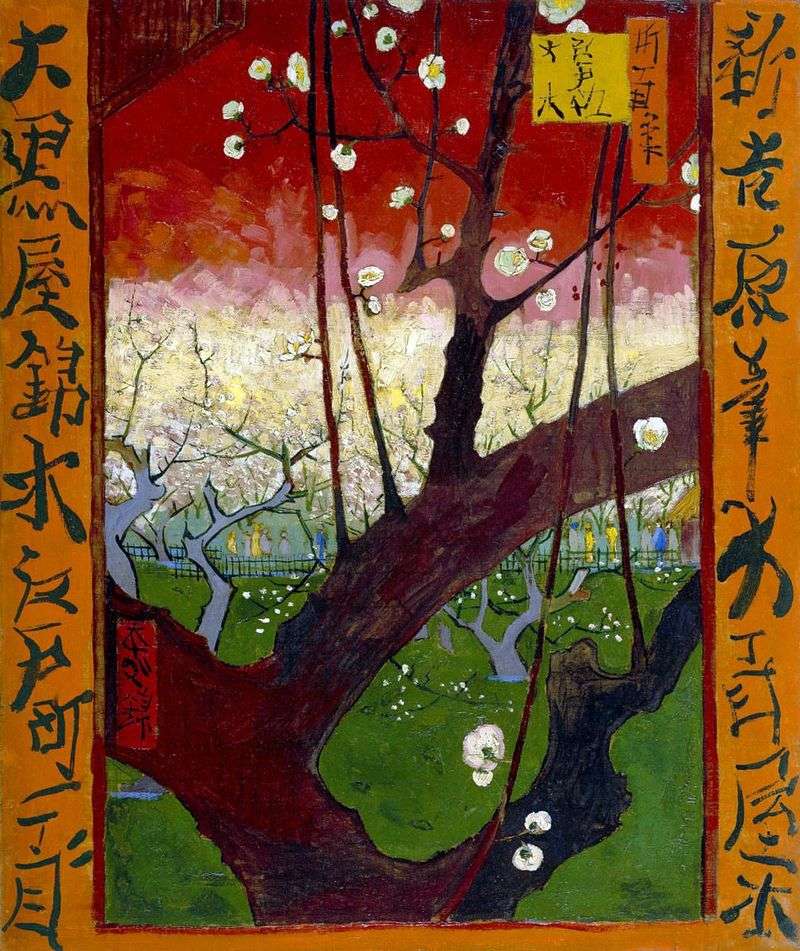
Getting acquainted with the works of the Impressionists, Van Gogh came to the conclusion that the art of Japanese engraving could affect the changes in art. The artist admired the way the Japanese paint – fast, like lightning, clearly and clearly. In his opinion, this was because they perceived everything happening more sharply, but at the same time in their thoughts and feelings there was no habitual for the European fuss and confusion.
Van Gogh wanted to achieve the same speed in his work, and he succeeded: in his short career, he created a huge number of paintings.
In the summer of 1887, Van Gogh made several copies of wood engravings by the famous Japanese artist Hiroshige. The work of Hiroshige made him truly admired. Copying “Bridge in the Rain”, the artist slightly changes the original colors, making them more succulent and saturated. So it enhances the impression of bright contrast combinations. In addition, he moved away from the original, framing the picture with a decorative green frame. To decorate it, he used red hieroglyphs, arbitrarily taken from other engravings. Thanks to all these nuances, Van Gogh avoided accurate reproduction of the engraving, putting into work a particle of his own perception.
 Flowering plum by Vincent Van Gogh
Flowering plum by Vincent Van Gogh Courtesan by Vincent Van Gogh
Courtesan by Vincent Van Gogh Self-portrait with a bandaged ear by Vincent Van Gogh
Self-portrait with a bandaged ear by Vincent Van Gogh Seine with Pontoon Bridge Grand Jet by Vincent Van Gogh
Seine with Pontoon Bridge Grand Jet by Vincent Van Gogh Blooming Garden by Vincent Van Gogh
Blooming Garden by Vincent Van Gogh Langlois Bridge in Arles and erasing women by Vincent Van Gogh
Langlois Bridge in Arles and erasing women by Vincent Van Gogh The Langlois Bridge in Arles and the road along the canal by Vincent Van Gogh
The Langlois Bridge in Arles and the road along the canal by Vincent Van Gogh Montmartre, road with sunflowers by Vincent van Gogh
Montmartre, road with sunflowers by Vincent van Gogh